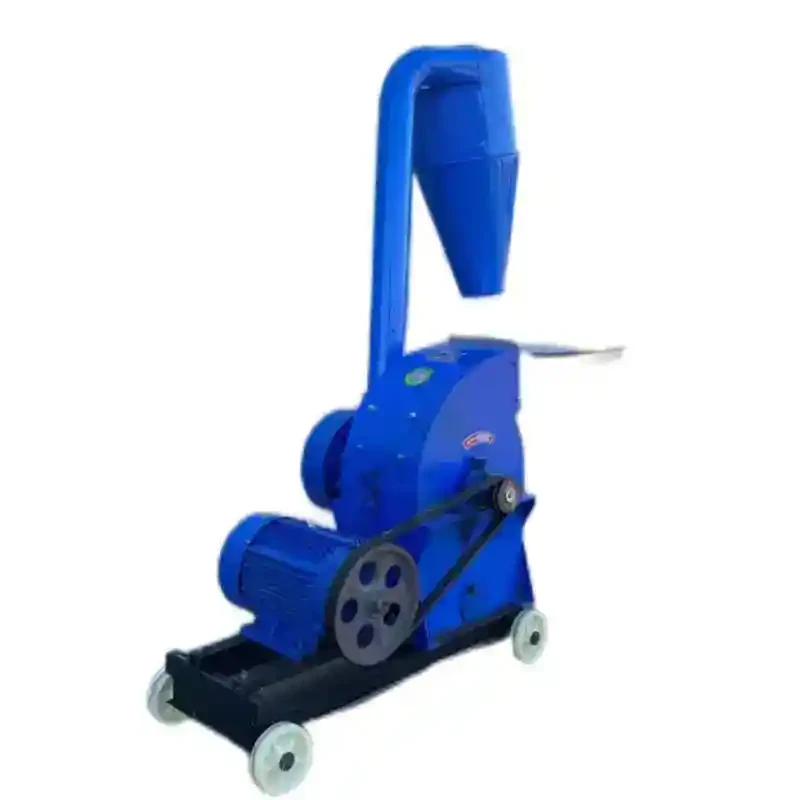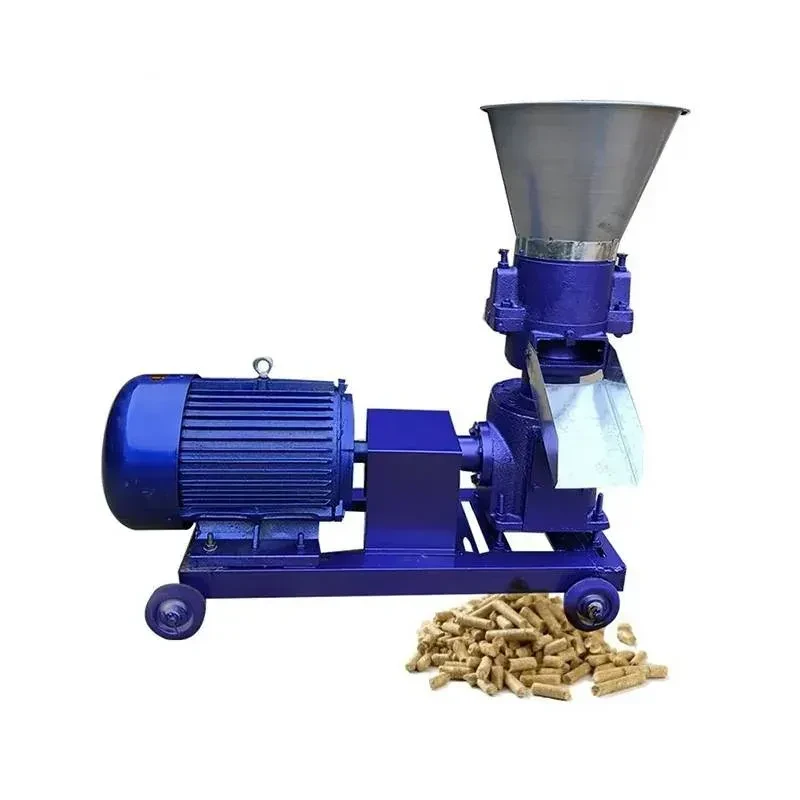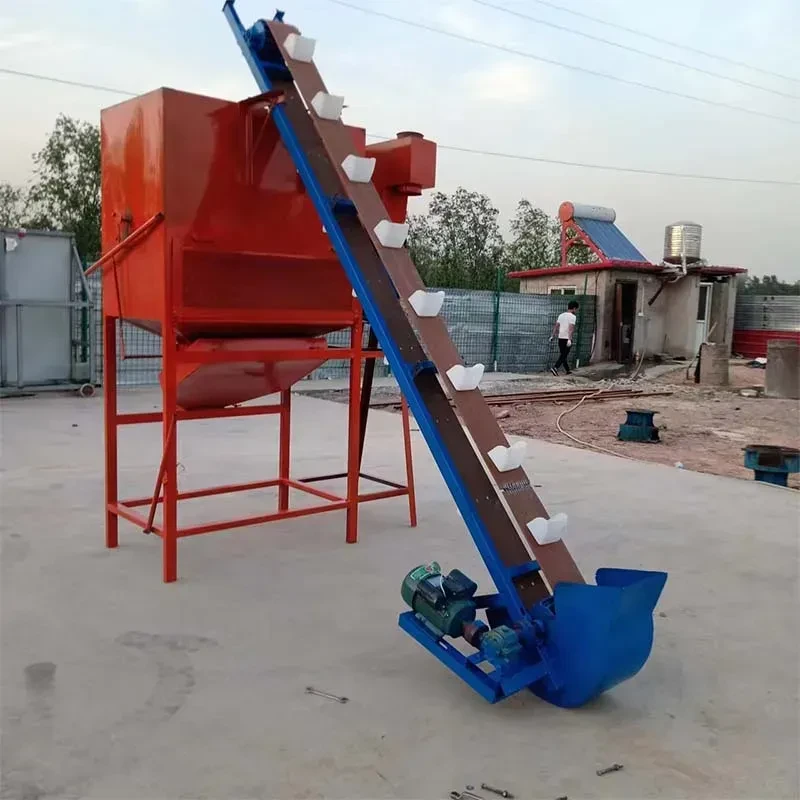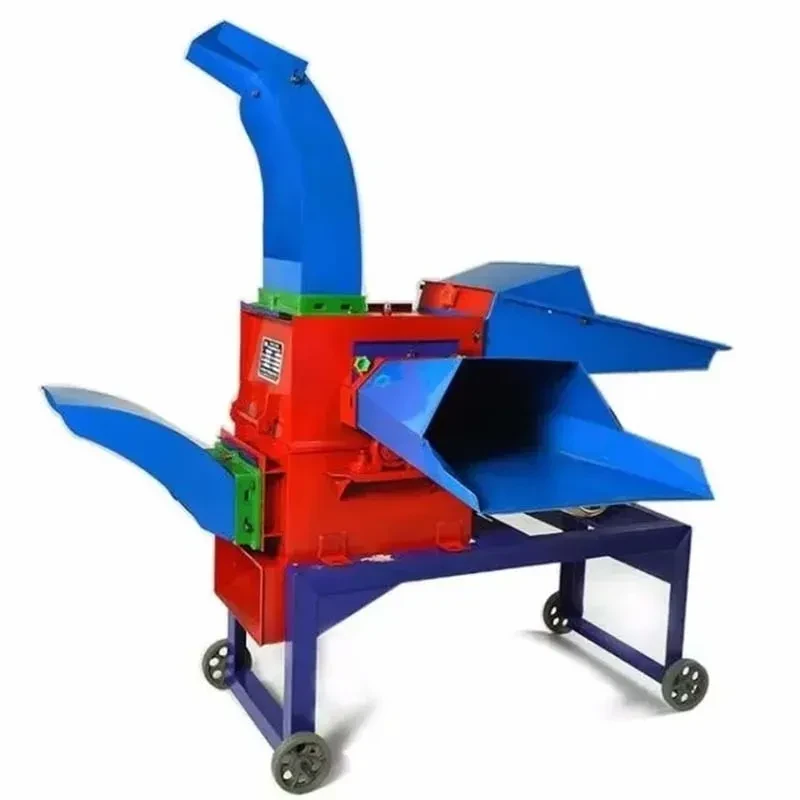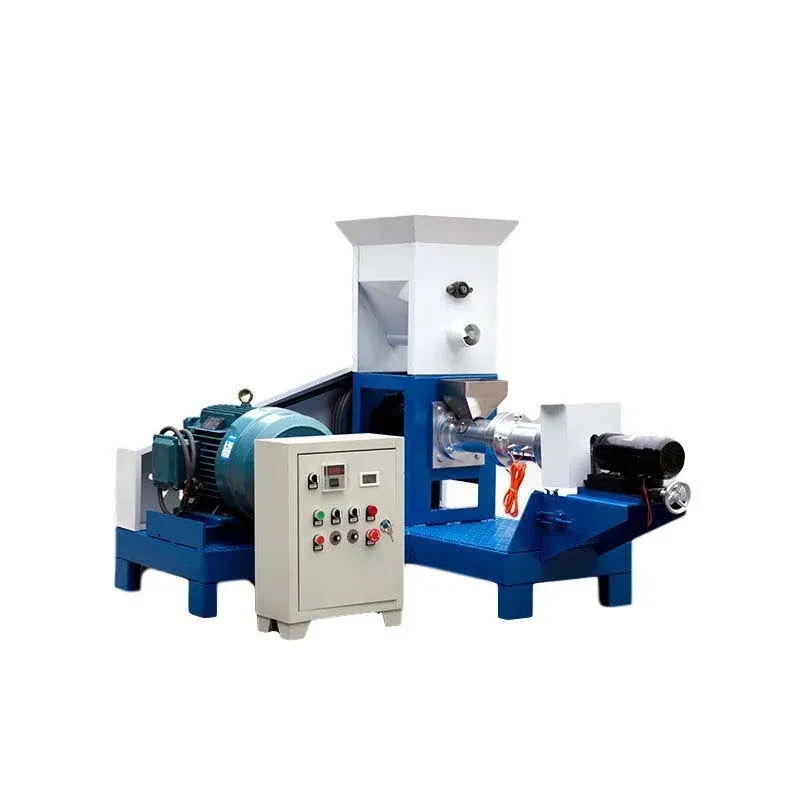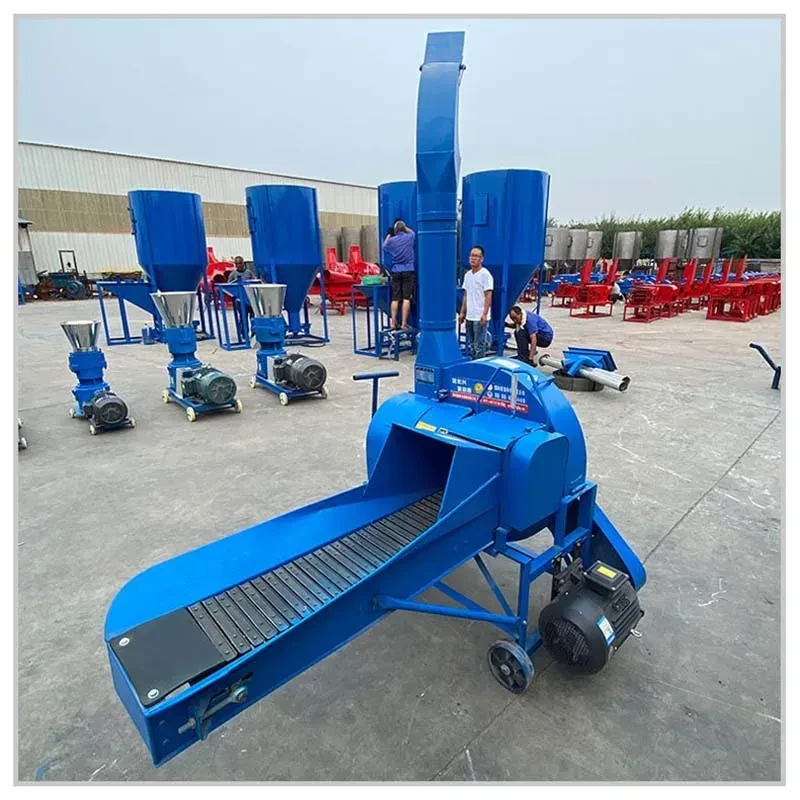Efficient feed processing is essential for optimizing animal nutrition and farm productivity. Our range of high-performance feed processing machines is designed to meet the diverse needs of poultry, dairy, and livestock operations. The poultry feed hammer mill delivers precise particle size reduction, ensuring optimal digestibility for birds while maintaining high throughput capacity. Its durable construction and innovative screen design allow for consistent grinding of various raw materials, from grains to protein supplements, with minimal energy consumption.
For forage-based operations, our feed chaff cutter machine provides superior chopping efficiency, transforming hay, straw, and green fodder into uniform lengths that enhance palatability and reduce waste. The heavy-duty blades and adjustable cutting mechanism accommodate different crop types, making it indispensable for dairy farms and ruminant feeding systems.
Complete feed formulation requires thorough mixing, and our vertical feed mixers excel in creating homogeneous blends with minimal segregation. The unique auger design ensures rapid, uniform incorporation of micro-ingredients and supplements, while the robust construction handles both dry and wet mixing applications. These mixers significantly improve feed quality while reducing labor requirements compared to manual methods.
Together, these machines form a complete feed processing system that enhances nutritional value, operational efficiency, and cost-effectiveness. By automating critical stages from size reduction to final mixing, they enable farmers to produce high-quality feed consistently while reducing dependency on commercial feed suppliers. Whether for small-scale operations or large commercial feed mills, our equipment is engineered to deliver reliability and precision in every batch.
What is the Difference Between a Grinder and a Hammer Mill?
Grinders and hammer mills are both essential feed processing machines, but they operate on different principles and are suited for distinct applications in livestock and poultry farming. A grinder, often referred to as a roller mill or burr mill, typically crushes materials between two rotating surfaces, such as rollers or plates. This method is ideal for producing coarsely ground or cracked grains, maintaining more uniform particle sizes with minimal heat generation. Grinders are commonly used in operations where preserving the structural integrity of the feed is important, such as in cattle or horse feed production, where overly fine particles are undesirable.
On the other hand, a hammer mill utilizes high-speed rotating hammers to pulverize materials through impact and shear forces. The feed ingredients are repeatedly struck until they pass through a perforated screen, which determines the final particle size. Hammer mills are highly versatile, capable of processing a wide range of materials, including grains, oilseed cakes, and fibrous substances like hay. Unlike grinders, hammer mills produce a finer, more consistent powder, which is particularly beneficial for poultry and swine feeds, where digestibility is enhanced by smaller particle sizes.
Another key difference lies in energy efficiency and maintenance. Grinders generally consume less power and generate less noise, making them suitable for small-scale farms. However, they may struggle with fibrous or tough materials. Hammer mills, while more energy-intensive, offer greater flexibility and can handle a broader variety of raw materials, including moist or sticky feeds. Additionally, hammer mills require regular maintenance, such as screen and hammer replacement, due to the high-impact nature of their operation.
What Are the Benefits of a Hammer Mill for Poultry Animal Feeds?
Hammer mills are widely regarded as the optimal choice for poultry feed production due to their ability to produce finely ground, highly digestible feed particles that enhance bird performance. One of the primary advantages is improved nutrient absorption. Poultry, particularly broilers and layers, benefit from smaller feed particles as they increase the surface area for enzymatic action in the digestive tract. This leads to better feed conversion ratios (FCR), meaning birds gain more weight or produce more eggs per unit of feed consumed.
Another significant benefit is versatility in ingredient processing. Hammer mills can efficiently grind a wide range of raw materials, including corn, soybean meal, wheat, and even fibrous additives like alfalfa. Unlike other grinding methods, hammer mills can handle both dry and slightly moist ingredients, reducing the need for pre-drying and saving time in feed preparation. The adjustable screen size allows farmers to customize the particle size based on the specific growth stage of the birds—finely ground for chicks and slightly coarser for grower or adult birds.
Operational efficiency is another key advantage. Modern hammer mills are designed for high throughput, enabling large-scale feed production with minimal labor. They can be integrated into automated feed milling systems, where they work in conjunction with mixers and pellet mills to produce complete feed in a continuous process. This automation reduces manual handling, lowers production costs, and ensures consistent feed quality.
Additionally, hammer mills contribute to feed uniformity, which is crucial in preventing selective feeding—a common issue where poultry pick out preferred ingredients and leave behind essential nutrients. Uniform particle size ensures that each bite contains a balanced mix of proteins, vitamins, and minerals, promoting optimal growth and health.
What is the Difference Between Vertical and Horizontal Feed Mixers?
Vertical and horizontal feed mixers are two common types of equipment used in livestock and poultry feed production, each offering distinct advantages based on farm size, feed type, and operational needs. The primary difference lies in their design and mixing mechanism, which directly influences efficiency, mixing quality, and suitability for different feed formulations.
A vertical feed mixer consists of a single or double auger that lifts ingredients from the bottom of the mixing chamber and disperses them from the top, creating a continuous circulation until homogeneity is achieved. These mixers are typically smaller in capacity and are ideal for small to medium-sized farms where space is limited. Vertical mixers are particularly effective for blending dry or slightly moist feeds, such as grain-based poultry or swine rations. Their compact design makes them easy to operate and requires less floor space, but they may struggle with very wet or fibrous materials like silage or total mixed rations (TMR) for cattle.
In contrast, horizontal feed mixers use a series of paddles or ribbons mounted on a horizontal shaft to mix ingredients in a trough-like chamber. This design provides a more aggressive and thorough blending action, making it suitable for a wider range of feed types, including high-moisture silages, fibrous hay, and mineral supplements. Horizontal mixers are favored in large-scale dairy and beef operations where uniform mixing of TMR is critical for animal health and productivity. They can handle larger batch sizes and achieve homogeneity faster than vertical mixers, reducing mixing time and labor costs.
Another key distinction is durability and maintenance. Horizontal mixers are built to withstand heavy-duty use, often featuring robust construction with wear-resistant liners to handle abrasive materials. However, they require more power and regular maintenance due to the mechanical stress on moving parts. Vertical mixers, while less powerful, are simpler in design and easier to maintain, making them a cost-effective choice for smaller operations.






